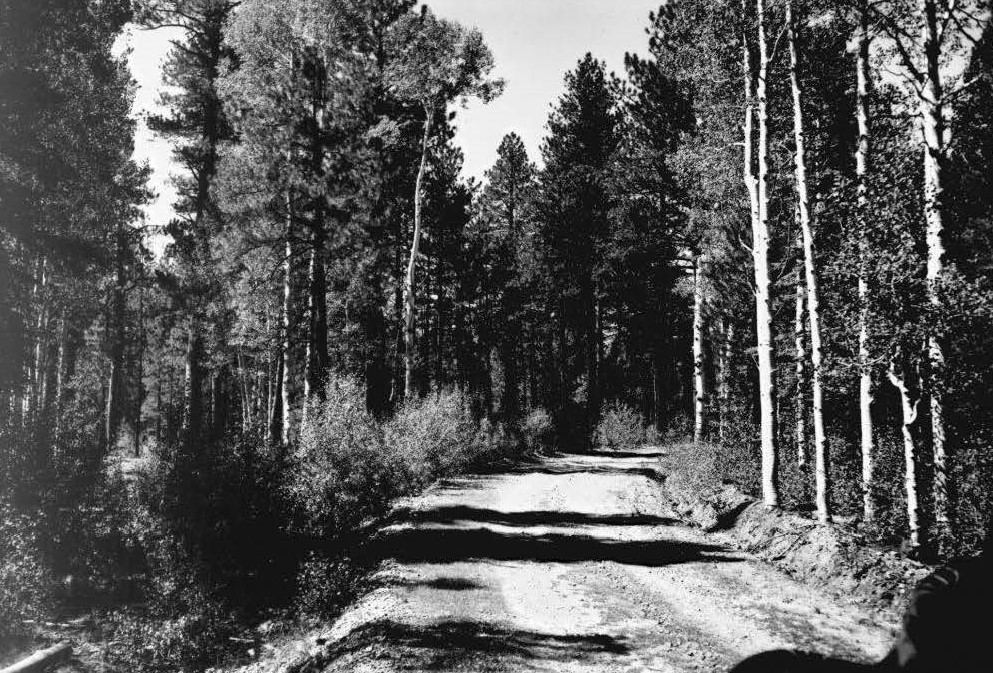Most tree stands are not world famous, but one in central Utah is: the Pando clone, located in Fishlake National Forest. Pando—Latin meaning I spread—is actually a single tree. It is a “forest of one” that sprouts over 40,000 stems through an expansive root system. Its cloned shoots, all from a single male parent aspen, form an ancient stand that is world famous for its size, weight, and age. The organism may be the oldest or among the oldest in the world.

Unfortunately, the Pando clone is in trouble. Although to the untrained eye the tall white trunks appear a healthy stand, scientists tell us the Pando is not rejuvenating at rates needed to sustain itself.[1] The root system may live for millennia, but the individual shoots don’t, and when they die off, new ones must take their place. If you visit the clone, notice that few small or middle-sized shoots are replacing the older generation.[2]
Some scientists and forest managers believe that the poor health of the Pando is due in large part to the browsing of deer, elk, and cattle. These animals eat the young shoots trying to grow. People interested in protecting the Pando clone are conducting an experiment. They have set up a fence around a large portion of the clone that prevents deer, elk, or cattle from entering. In this way they can compare the health of the clone where grazing is possible and where grazing is closed off.
What is the right balance of wildlife (deer, elk) and livestock (cattle, sheep) on the land? For generations forest managers and state officials worked to maintain deer and elk herds, and other wildlife populations, at their highest possible levels. State officials stocked streams with fish and reintroduced game animals so they could be fished and hunted by people in the state. As many as a quarter million deer roamed the ranges of Utah in the decades following 1942. At the same time federal managers regulated the numbers and movements of domestic livestock. Statewide, cattle numbered 484,000 in 1920 and held steady in numbers well past 1950.[3]

Although we don’t know specific impacts on the Pando clone, rebounding populations of deer and the presence of other wildlife and domestic animals on forested lands since the early twentieth century has clearly had an impact on aspen health. Nearly a century ago, long before anyone knew anything about Pando, the Forest Service conducted watershed and range studies to determine forest health. The individual in charge of managing the Manti forest identified sheep in particular as a threat to “aspen reproduction” and recommended that sheep grazing on “cut-over aspen” be stopped for three years.[6] A 1934 survey of deer and range conditions on the Beaver district of the Fishlake National Forest involved twenty-six “experiment plats”—not unlike the current enclosures—designed to either keep deer out entirely or to provide access to deer but not livestock. The result: underbrush and lower limbs had started to regrow where deer had been excluded, whereas in the plats grazed by deer the aspens had been “completely stripped.”[7]
The current fenced enclosures are helping to protect at least a part of the Pando clone. That is good news for the world’s largest living organism. But forest managers and officials are still trying to find the right balance between wildlife populations and a healthy forest ecosystem. That is a big challenge indeed.
[1] Paul C. Rogers and Darren J. McAvoy, “Mule deer impede Pando’s recovery: Implications for aspen resilience from a single-genotype forest,” PLoS ONE 13 (2018) at https://doi.org/10.1371/journal.pone.0203619.
[2] For information on plant diversity at Pando, see Paul C. Rogers and Jan Šebesta, “Past Management Spurs Differential Plant Communities within a Giant Single-Clone Aspen Forest,” Forests 10 (2019) at https://www.mdpi.com/1999-4907/10/12/1118.
[3] Utah State Department of Fish and Game, Range for Big Game and Livestock in Utah, Bulletin 2 (1950), 6, 9–10, PAM 3670, Utah State Historical Society, Salt Lake City, Utah.
[4] Department of Fish and Game, Range for Big Game and Livestock in Utah, 3. Another way to put this is “to maintain the maximum harvestable surplus of animals consistent with game-range production.” Temple A. Reynolds, Jr., The Mule Deer: Its History, Life History, and Management in Utah, published by Utah State Department Fish and Game, 17, PAM 3666, USHS.
[5] Harold S. Crane, “Director Views Deer Management,” 2, PAM 8113, USHS.
[6] “Officials End Grazing Meet,” Ogden Standard-Examiner, July 11, 1926; Thomas G. Alexander, The Rise of Multiple-Use Management in the Intermountain West: A History of Region 4 of the Forest Service (U.S. Department of Agriculture, Forest Service, May 1987), 91.
[7] “Deer Reported in Fine Shape,” Milford News, September 13, 1934.
[8] Qt. in Yasmin Tayag, “A Single Giant Organism 107 Acres Wide Is Dying Fast,” Inverse, October 17, 2018, https://www.inverse.com/article/49975-utah-s-pando-aspen-clone-is-dying.[9] This justification has been used to reintroduce, for instance, non-native mountain goats in the La Sal range and non-native trout in alpine lakes. See Adam Federman, “The Hidden Battle Threatening the Future of America’s Wild Places,” Pacific Standard, March 5, 2019, https://psmag.com/environment/the-hidden-battle-threatening-the-future-of-americas-wild-places. An exception to case law granting states ownership and control of wildlife is Hunt v. United States, 278 U.S. 96 (1928), which opined that the federal government had authority to kill wild deer if their numbers had ballooned to such a point as to damage permanently trees, bushes, and other vegetation on federal lands.